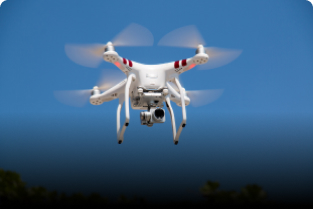Drone technology has evolved from simple quadcopters to highly sophisticated machines capable of transforming industries. From delivering packages to monitoring crops, drones have found their place in nearly every field. But among the many innovations, one particular development stands out as truly fascinating — the delivery drone networks and autonomous swarm drones that are shaping the future of logistics, rescue, and even defense systems.
Let’s explore what makes these drone engineering marvels so interesting and impactful.
1. Autonomous Delivery Drones – Revolutionizing Logistics
One of the most impressive advancements in drone engineering is the creation of autonomous delivery drones. Companies like Amazon, Wing (by Google), and Zipline have developed drones that can deliver packages and even medical supplies across long distances with minimal human intervention.
These drones use advanced GPS systems, AI-based obstacle detection, and machine learning algorithms to navigate safely. Zipline, for example, operates in countries like Rwanda and Ghana, delivering blood and vaccines to remote areas — saving countless lives.
What makes it interesting?
These drones combine multiple engineering disciplines — aerospace, artificial intelligence, robotics, and logistics — to operate seamlessly in real-world conditions. They are a perfect example of technology solving real human problems efficiently and sustainably.
2. Swarm Drone Technology – The Future of Coordination
Another incredible piece of drone engineering is the development of swarm drones. Inspired by the collective behavior of bees or birds, swarm drones can communicate with each other to perform coordinated actions without human control.
Swarm drones are being tested for search-and-rescue operations, military surveillance, environmental monitoring, and light shows. They use a decentralized system, where each drone makes independent decisions while staying connected to the swarm’s overall goal.
What makes it interesting?
Swarm drones demonstrate how artificial intelligence and communication systems can enable machines to collaborate like living organisms. This opens the door to new possibilities — such as deploying hundreds of drones to map disaster zones or deliver supplies faster than any ground-based vehicle could.
3. Hybrid VTOL (Vertical Take-Off and Landing) Drones
Traditional drones are often limited by flight time or terrain. That’s where Hybrid VTOL drones come in — combining the agility of quadcopters with the endurance of fixed-wing aircraft.
These drones can take off vertically like a helicopter and then transition into forward flight like an airplane, allowing them to cover large distances efficiently. They’re being used in surveying, mapping, agriculture, and long-range delivery missions.
What makes it interesting?
The engineering behind these drones requires complex aerodynamics, precise control algorithms, and seamless transitions between flight modes — making them a masterpiece of modern aerospace design.
4. Underwater and Aerial Hybrid Drones
A recent innovation that’s truly fascinating is the development of drones that can operate both underwater and in the air. These hybrid drones can dive into water to collect data or perform inspections and then return to the air for aerial imaging.
Such drones have immense potential in marine research, underwater inspections, and search missions. For example, engineers are experimenting with pressure-resistant designs and adaptive propulsion systems to handle two completely different environments.
What makes it interesting?
This dual-environment capability challenges traditional engineering boundaries and shows how far we can push the limits of drone design.
5. Bio-Inspired Drones
Some of the most innovative drones are inspired by nature — mimicking birds, insects, and even fish. Engineers are creating drones that flap their wings, hover like hummingbirds, or crawl through tight spaces like beetles.
These bio-inspired designs are being developed for covert surveillance, environmental monitoring, and exploration in dangerous or confined environments.
What makes it interesting?
By studying nature’s efficiency, scientists are designing drones that are lighter, quieter, and more agile than ever before. This fusion of biology and technology represents the future of drone engineering.
Conclusion
Among all the fascinating innovations, autonomous swarm drones and hybrid VTOL drones stand out as the most interesting examples of modern drone engineering. They represent the perfect blend of artificial intelligence, aerodynamics, and robotics — pushing the boundaries of what machines can do.

